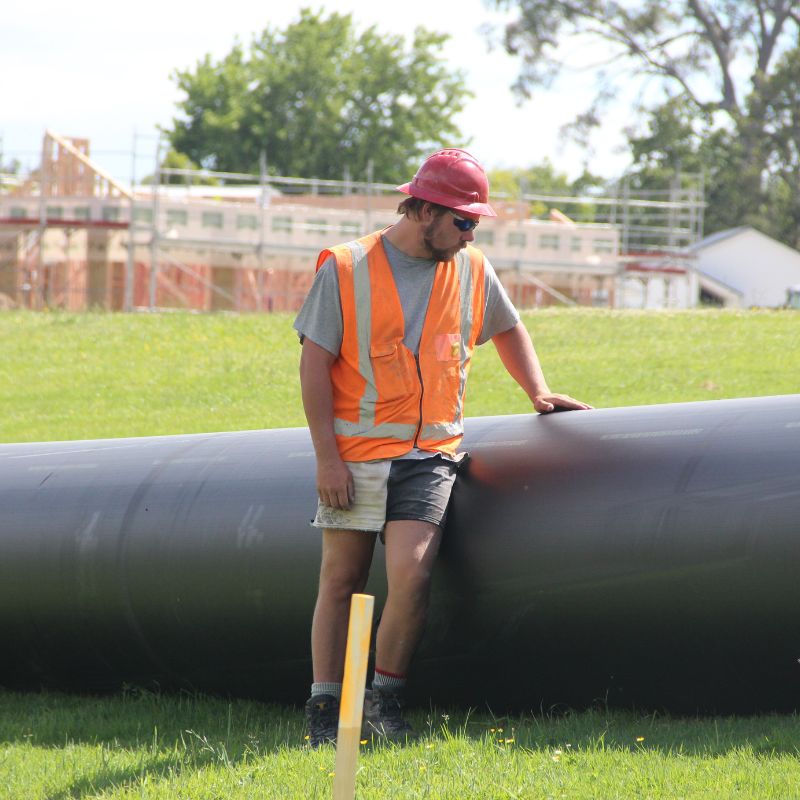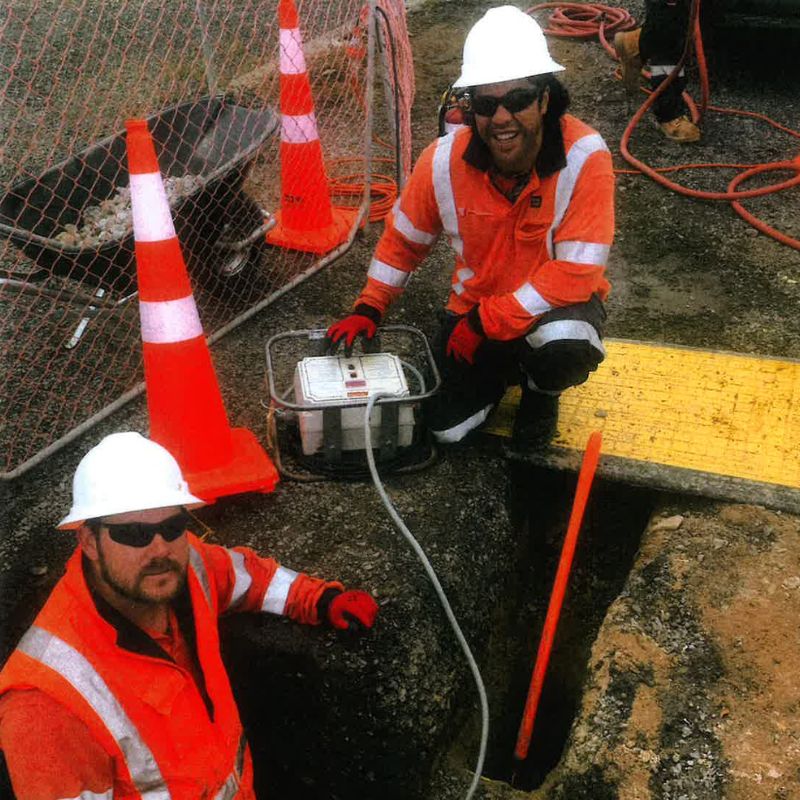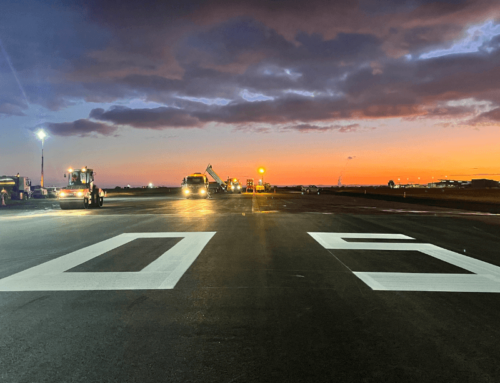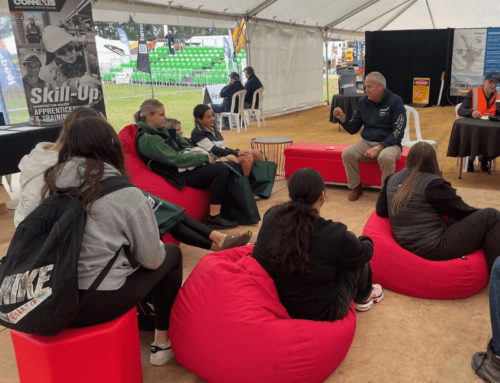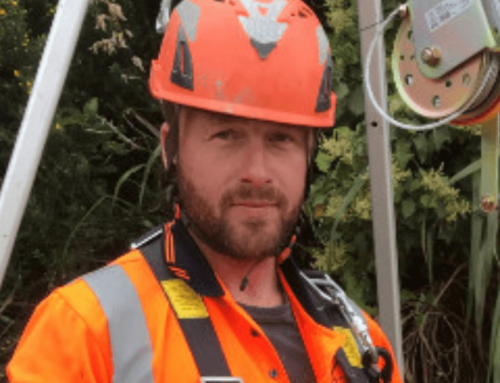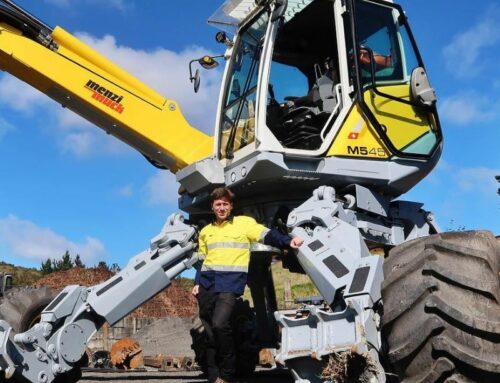Te Awamutu local Reuben Ford can navigate a team through installing 25 mm pipes in the dark, metres underground, but 10 years ago he was like any other school leaver – starting out with little more than a good attitude and a restricted drivers’ licence.
Now 31 years of age, his expertise in directional drilling creates huge savings in time and disruption on crucial infrastructure upgrade projects like the replacement of Hamilton’s ageing gas pipe network with larger diameter pipes.
Rueben says out solutions to tricky problems and learning new skills is what gets him out of bed in the morning.
“You’re always learning: driving a truck one day, operating a digger the next, doing a bit of locating, or operating a drill – even in the hydro excavation trucks there’s a lot going on.”
Reuben works for Smythe Contractors and leads a team of six to operate a directional drill. Directional drilling is a pipe installation method that uses rods to precisely bore holes and pull pipe through the gap left behind, removing the need to dig trenches.
The drill head has an electromagnetic locator beacon that signals to a separate locator system. The locator system’s direction and depth indicator interface allow the driller to be controlled precisely from above ground.
“The locator tells the driller to go down to dodge an underground service or obstacle or go up to a pit to make a connection. If it’s hard ground you’ll be fighting it all the way back, it’s not easy.”
With larger diameter holes a ridged reamer is attached to the drill head to make it easier to cut through the ground.
“If it’s a bigger cut we ream first and make sure it’s a beautiful hole, so when we hook onto the pipe we can just fly it straight in – it goes in like a dream.”
He enjoys the thrill of working with heavy machinery and says it’s “cool” to be able to walk around the streets setting everything up remotely with high-tech equipment.
As well as avoiding the need to dig down from above when laying pipes, directional drilling also reduces disruption to traffic and commercial activities and removes the need to restore the site to its original condition or deploy traffic management. Reduced disruption to traffic and businesses allows jobs to be done during the day and saves time and money overall, Reuben says.
“When working in busy areas we can just dig two holes on each side of the road, set our drill up, drill underneath the road and it doesn’t affect anyone.”
His team can confidently handle a drill length, or “shot”, of an impressive 200 m.
“If you’re going across a block with two intersections, we can drill across the whole lot in one shot and not even think about it. If someone had to dig across the block it would be a huge headache.”
Past projects Reuben has worked on throughout New Zealand include the upgrade of Auckland’s storm water system, installing 350 mm commercial wastewater pipes in Edgecumbe, Bay of Plenty, and the Peacocke Northern Transfer Main project in Hamilton, which won the “Project with a value between $20m and $100m” category at the Civil Contractors New Zealand Hirepool Construction Excellence Awards in 2022.
For the past five years Reuben’s main task has been working on the overhaul of Hamilton’s gas pipe network to replace the existing pipes with larger diameter upgrades, with the gas network remaining live during the work to avoid any disruption of gas supply.
He says there’s a lot of skill and precision that goes into replacing the network, especially as the industry requires pipes to be laid within a tolerance of 0.8 and 1.1 m deep, leaving little room for error.
“Anyone can stab the pipe in at 2 m deep, but it doesn’t really work like that when you’ve got 12 connections to do. You’ve got to make it easy to get to and work on.”
Working in Hamilton East, one of the older parts of the city, during the network overhaul is particularly challenging because of the historic build-up of underground services. He says you can usually figure out where power and telecommunications services are but gas pipes and sewers are harder to find, as records are older and less available.
Hydrovac trucks are essential tools his team uses to liquefy soil in test pits with high-pressure water along the proposed drilling line before drilling occurs to make sure there’s no hidden surprises lurking underneath the surface.
“There’s just so much in the ground these days, it’s very hard to find a spot to drill.
“If you hit something on site it could blow up quite big, people don’t like their services getting disrupted – you’ve got to outshine the rest.”
Reuben says he enjoys working for a family-run business with a boss who “genuinely cares”, which is probably why he’s been at Smythe Contractors for a decade.
“Everyone’s really good there, keen to help out and be a part of it.”
Reuben was recognised for his leadership and communication skills at the Civil Contractors New Zealand’s National Conference in 2022, receiving a highly commended award in the Z Energy People Awards’ Emerging Leader category.
He has a keen understanding of how to motivate a team, making a point of clearly explaining to his team exactly what needs to be done every morning before they start the day’s work, understanding that without a clear goal it’s hard for people to be motivated.
He also makes a point of encouraging his team to use their initiative, as well as thanking them for their efforts at the end of the day and taking the time to get to know what makes them tick.
“You’ve just got to get to know someone, it’s the only way you can develop their strengths and work on their weaknesses. Some people love recognition – it goes a long way.”
For those looking to get into the civil construction industry Reuben says there’s plenty of opportunities out there waiting for people, and a lot of crucial work to be done – “you don’t know until you try, you might love it”.
When you are part of a tight-knit team of people who have each other’s backs it’s a great feeling, he says.
“With a good team you can do anything.”

